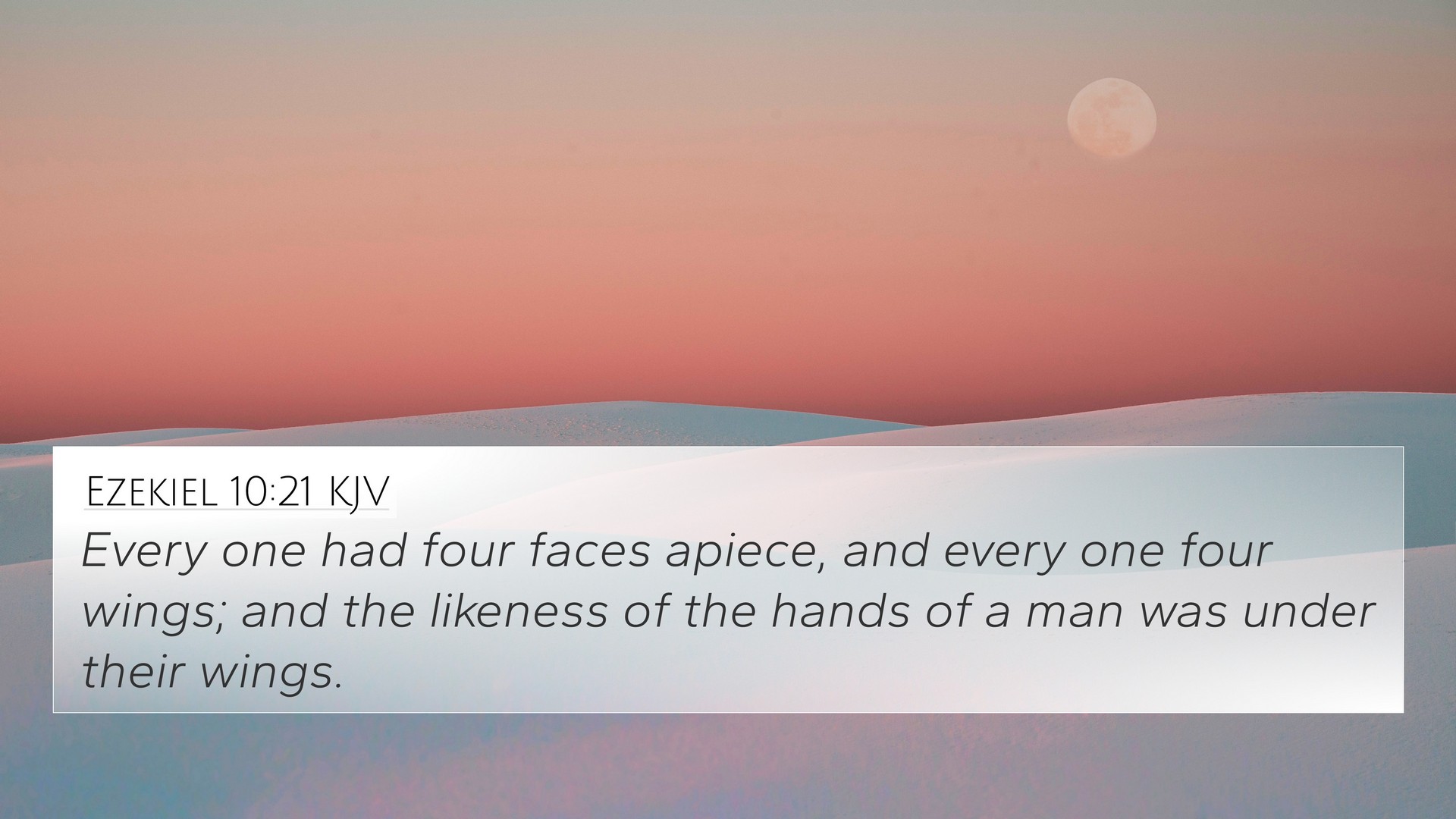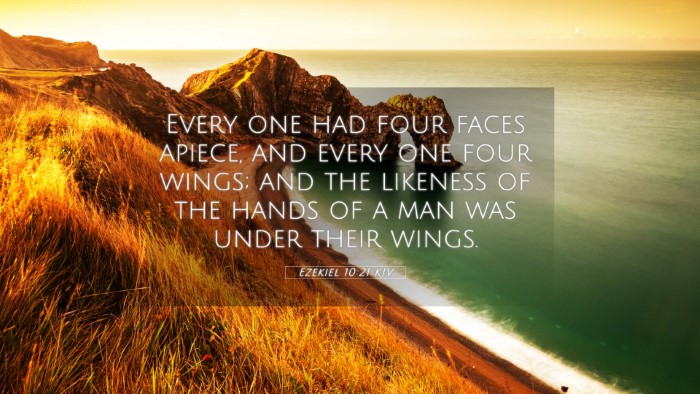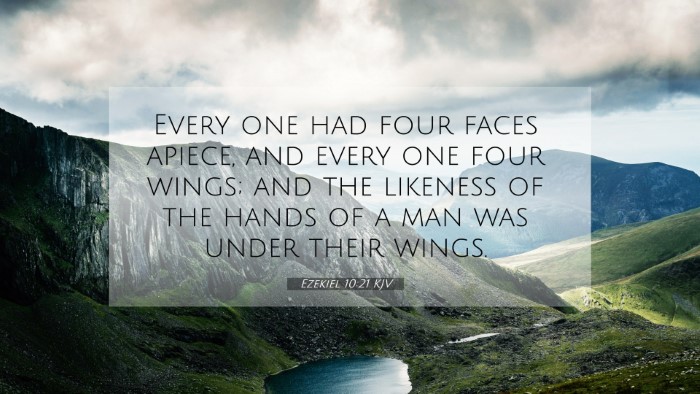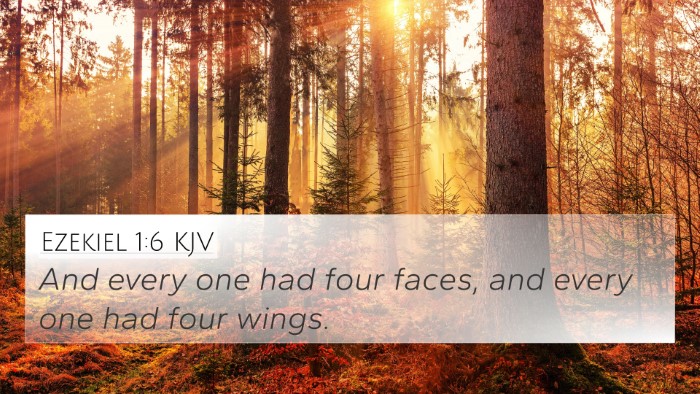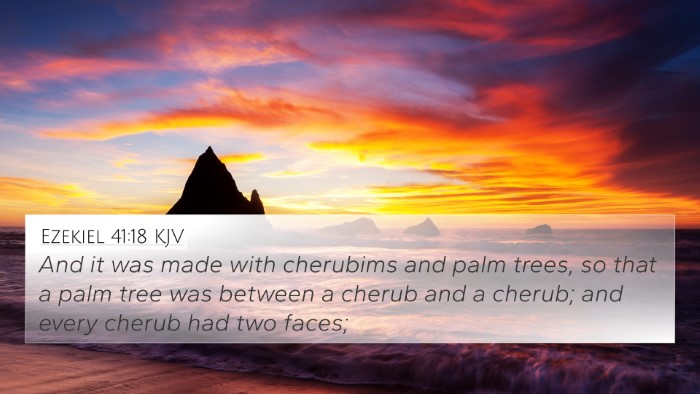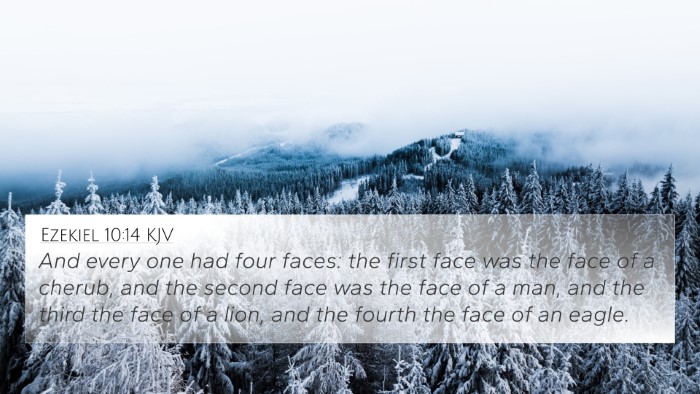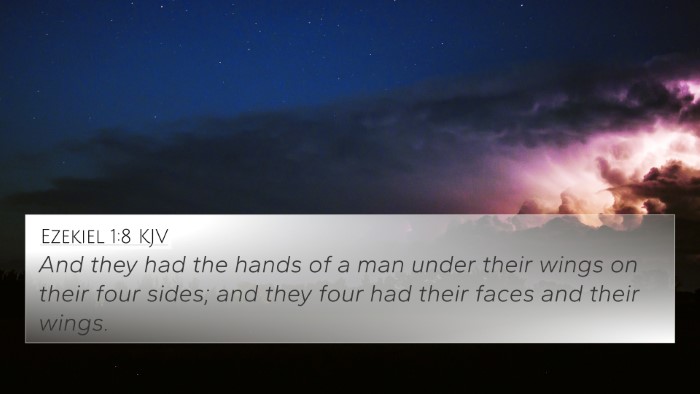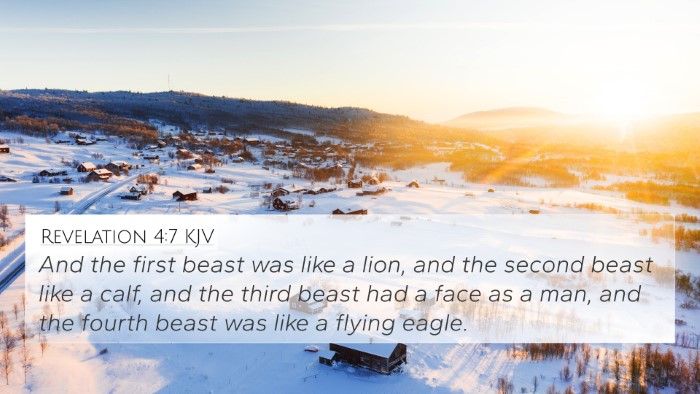Ezekiel 10:21 - Understanding the Verse
Ezekiel 10:21 states:
"Each one had four faces and each one four wings, and beneath their wings was the form of human hands."
Summary of the Verse:
This verse describes a significant vision of cherubic beings encountered by Ezekiel, showcasing attributes that highlight their divine nature. The four faces symbolize the omnidirectionality and comprehensive nature of God's presence, while the four wings denote their swiftness and readiness for service. The human hands beneath the wings signify their ability to interact with humanity and perform the tasks as commanded by God.
Commentary Insights
Matthew Henry's Commentary
Matthew Henry interprets this vision as an illustration of the divine beings' abilities and the multifaceted nature of God's presence in the world. He emphasizes that the various faces represent different aspects of God's creation: the lion (strength), the calf (service), the man (intellect), and the eagle (swiftness). This multiplicity reinforces the idea that God is sovereign over all realms of existence.
Albert Barnes' Commentary
Albert Barnes expands on the symbolic meanings of the four faces and wings. He points out that the four wings may symbolize the rapid movement of God's plans, demonstrating how God's authority can be implemented through His creation across all dimensions. The hands under the wings denote that these beings are not only powerful but also capable of purposeful action, emphasizing the idea of divine operatives in the execution of God's will.
Adam Clarke's Commentary
Adam Clarke provides a detailed description of the characteristics of the beings. He notes that the four faces indicate each being's diverse powers and abilities. Clarke further mentions that this imagery serves as a reminder to Israel of God's active involvement in their lives and His omnipotent capacity to govern, protect, and direct His creation.
Bible Verse Cross-References
To gain a deeper understanding of Ezekiel 10:21, one can explore the following cross-referenced Bible verses:
- Revelation 4:6-8 - Describes the living creatures around the throne of God with similar attributes.
- Isaiah 6:2 - Features seraphim with wings, illustrating the heavenly beings' nature.
- Ezekiel 1:5-10 - Provides an earlier description of these beings, emphasizing their faces and forms.
- Job 38:1-7 - Reflects on God's creation and the heavenly beings' role during its formation.
- Psalms 104:4 - Mentions God making winds His messengers, connecting to the swift nature of these beings.
- Daniel 9:21 - Discusses the swift arrival of angelic beings in response to prayer.
- Matthew 18:10 - Alludes to angels in the presence of God, highlighting their protective roles.
- Hebrews 1:14 - States angels are ministering spirits sent for those who will inherit salvation.
- Zecharaiah 1:10 - Refers to God's emissaries, wearing various appearances to accomplish His work.
- Acts 10:30-31 - Illustrates angelic beings interacting with humans, emphasizing their role in Divine communication.
Connections between Bible Verses
The connections within various scriptures, particularly between Ezekiel's visions and other Biblical texts, enhance our understanding. By examining how these scriptures relate to each other, we can see a pattern of God's governance through various entities, including angelic beings. The thematic connections point to God's sovereignty, omnipresence, and the collaborative nature of His creation.
Tools for Bible Cross-Referencing
To efficiently navigate these connections, consider using:
- Bible Concordance: A useful reference tool to look up specific words and their occurrences throughout the Bible.
- Bible Cross-Reference Guide: Helps in finding specific thematic links between different verses.
- Cross-reference Bible Study: Techniques to delve deeper into the Scriptures, uncovering layers of meaning.
Using Bible Cross-References
Understanding how to utilize cross-references can greatly enhance one’s Bible study. When seeking deeper insights, consider these methods:
- Identify Themes: Choose a central theme, such as 'divine presence,' and find verses that relate to it.
- Comparative Study: Analyze how different authors depict similar ideas, such as the role of angels across the Bible.
- Contextual Reading: Examine surrounding verses to better understand the context of the reference.
Conclusion
In summary, Ezekiel 10:21 serves as a profound clue into the nature of divinely commissioned beings within Biblical narratives. The insights derived from public domain commentaries alongside the interconnections found throughout scripture provide a comprehensive understanding. Utilizing tools for Bible cross-referencing, one can pursue further study, revealing the rich tapestry that the Bible presents in depicting God’s interaction with creation.
